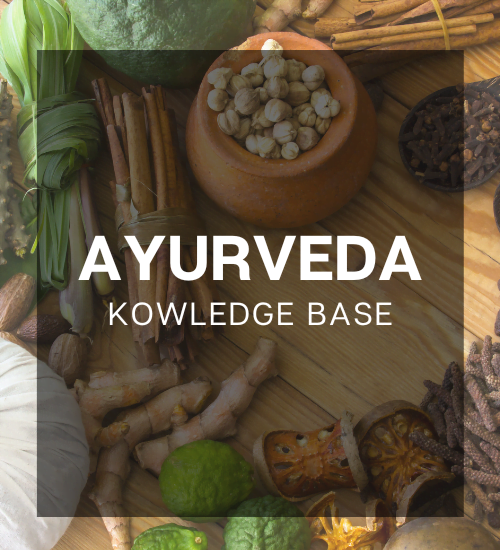No products in the cart.
Vata Rakta (Gout)

The reaction between vitiated vata dosha and rakta in the body is called vata rakta.This is also called kuda vata as it involves joints, also known as Aadhya roga.
Vatadhika, pittadhika, kaphadhika, raktadhika, dwandwaja and sannipatika.
Symptoms:
Excess sweating or no sweating is observed, blackish skin, loss of sense of touch, pain in wound formed, looseness in the joints, pain in calf muscles, knees, thighs, lumbar region, heaviness of body and effected joints, rash, itching numbness present with severe joint pains and discolouration of skin followed by :
Uttan vata rakta: involves skin and muscle tissues, with itching, burning pain, contractions, blakish red discoloration, appear. If it is neglected it turns into gambhira vata-rakta.
Gambhira vata rakta: it is serious or deep type which involves fat, bones and bone marrow. Swelling, stiffness, hardness, severe pain, burning-pricking-breaking pain in joints, deformity of joints, lameness, blackish discoloration is observed.
Fatal symptoms:
Frequent fainting, unconsciousness, insomnia, fever, headache, loss of taste, breathlessness, complete discoloration of skin are fatal symptoms.
Sneha poorvaka virechana is with best action.
Do’s & don’ts: Avoiding the causative factors are the prime management of disease.Intake of light diet with use of old food grains is advised.Straightly no use of deep fried and non vegetarian food.
Types: #
Uttana and gambhiraVatadhika, pittadhika, kaphadhika, raktadhika, dwandwaja and sannipatika.
Etiology: #
Excess intake of salty, sour, oily, hot foods, spoiled or dry flesh of water dwelling and other animals, dried vegetables, dried flesh, curd, buttermilk honey in cooked form and intake of raw legumes in excess, frequent excess eating, food of opposite qualities, day sleep or sleepless nights, psychological factors includes anger, grief etc,.,rich lazy delegated behavior, external injuries, excess swimming are the causative factors for vata rakta.Pathogensis: #
Due to etiological factotrs vata dosha and blood get vitiated, circulates in the body and get lodged primarily in the small joints of fingers and toes there after follows the bigger joints in the body. the pathology of this disease originates in blood, spreads through blood vessels and nerves and finally gets settled in the joints.Symptoms:
Excess sweating or no sweating is observed, blackish skin, loss of sense of touch, pain in wound formed, looseness in the joints, pain in calf muscles, knees, thighs, lumbar region, heaviness of body and effected joints, rash, itching numbness present with severe joint pains and discolouration of skin followed by :
Uttan vata rakta: involves skin and muscle tissues, with itching, burning pain, contractions, blakish red discoloration, appear. If it is neglected it turns into gambhira vata-rakta.
Gambhira vata rakta: it is serious or deep type which involves fat, bones and bone marrow. Swelling, stiffness, hardness, severe pain, burning-pricking-breaking pain in joints, deformity of joints, lameness, blackish discoloration is observed.
Prognosis: #
Recently started and having single dosha involvement is curable. With two doshas involvement it is controllable, with three doshas involvement and with complications ,it is incurable.Fatal symptoms:
Frequent fainting, unconsciousness, insomnia, fever, headache, loss of taste, breathlessness, complete discoloration of skin are fatal symptoms.
Line of treatment: #
Sneha-sweda-sodhana(rechana)-samana chikista to be done.Sneha poorvaka virechana is with best action.
Do’s & don’ts: Avoiding the causative factors are the prime management of disease.Intake of light diet with use of old food grains is advised.Straightly no use of deep fried and non vegetarian food.
Medication: #
avipattikara churnam,
sitopaladi churnam,
yastimadhu churnam,
dasamruta haritaki lehyam,
triphaladi lehyam,
dadimadi gritam,
seetambu paneeyam,
giloy sat,
kadhirarista,
mahamanjista kwath,
ushirasava,
bilwadi gutika,
Arthritis
Inflammatory condition of joints is termed as arthritis. classification includes:
Inflammatory : infections to joints by an external cause like invasion of bacteria, fungi, virus, rickettsiae etc.,.Inflammatory poly arthritis: Rheumatic fever, rheumatic arthritis.
Degenerative: osteo arthritis, spondylosisMetabolic,biochemical,endocrine related: gout, scurvy, haemophilia, hyper para thyroidism.
Connective tissue disorders: Psoriasis, system lupus erythematosis, scleroderma, sarcodiasis, poly arthritis nodosa.
Symptoms includes swelling, pain, discoloration, dislocation, disfiguration of affected joints is observed. Symptomatic treatment is based on condition.
Modern view: #
Arthritis
Inflammatory condition of joints is termed as arthritis. classification includes:
Inflammatory : infections to joints by an external cause like invasion of bacteria, fungi, virus, rickettsiae etc.,.Inflammatory poly arthritis: Rheumatic fever, rheumatic arthritis.
Degenerative: osteo arthritis, spondylosisMetabolic,biochemical,endocrine related: gout, scurvy, haemophilia, hyper para thyroidism.
Connective tissue disorders: Psoriasis, system lupus erythematosis, scleroderma, sarcodiasis, poly arthritis nodosa.
Symptoms includes swelling, pain, discoloration, dislocation, disfiguration of affected joints is observed. Symptomatic treatment is based on condition.
Updated on November 26, 2024
Powered by BetterDocs

Terms & Conditions
Apply

100% Safe delivery
By Our Courier Partners

Shipping Policy
On Time Dispatch

Return & Refunds
Terms Apply.

Site Security
SSL Secured

Vasavi Ayurveda is a well-known and reputed Ayurvedic treatment center, established in 2016.
Address
9/251-1, GOURI SANKARA PURAM, GUDIVADA, Krishna,
Andhra Pradesh, 521301.
Call Us
(+91)-9154277848
Hours
10:00 - 16:00, Mon - Sun
© 2022 – 2023, Vasavi Ayurveda Private Limited – All rights reserved.
Design & Developed By: Cascan Digital
No products in the cart.
© 2022, Vasavi Ayurveda Private Limited – All rights reserved.
Design & Developed By: Cascan Digital
- Image
- SKU
- Rating
- Price
- Stock
- Availability
- Add to cart
- Description
- Content
- Weight
- Dimensions
- Additional information
 Doctor_Panel
Doctor_Panel






 INR
INR 





























